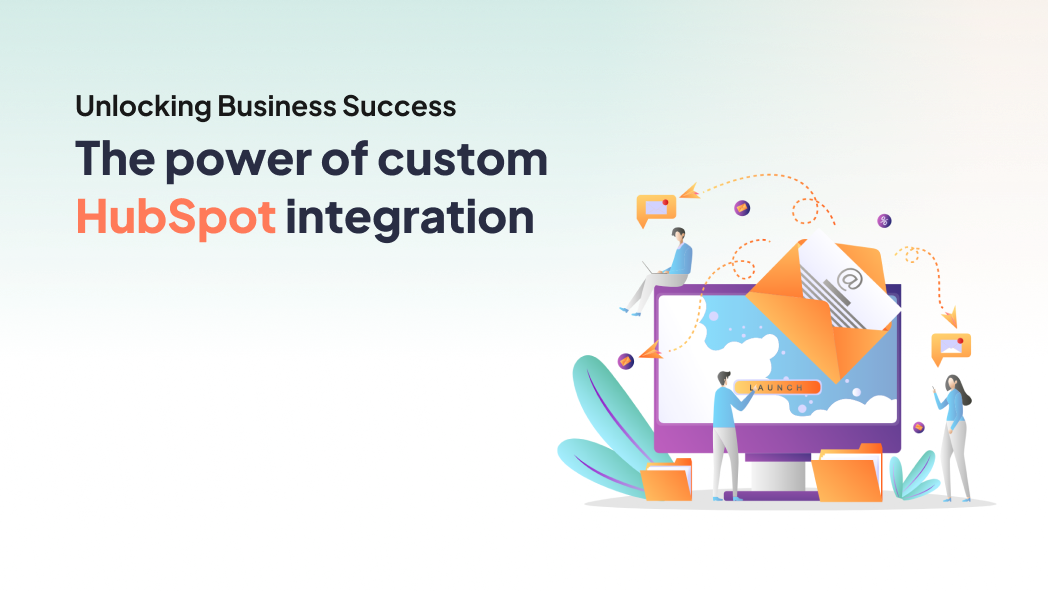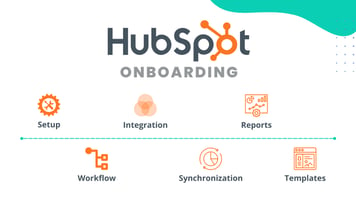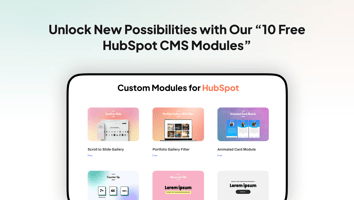HubSpot is the most powerful marketing automation platform and Top CRM platform that helps brands...
Discover how custom HubSpot integrations can take your business to the next level and unlock new opportunities for success.
The Benefits of Custom HubSpot Integrations
Custom HubSpot integrations offer a wide range of benefits for businesses. By integrating HubSpot with other tools and platforms, businesses can streamline their operations, improve efficiency, and enhance their overall productivity. One of the key benefits is the ability to centralize and automate various processes, such as lead generation, customer relationship management, and marketing campaigns. This integration allows businesses to have a unified view of their data and enables them to make data-driven decisions.
Custom integrations also enable businesses to personalize their interactions with customers. By integrating HubSpot with customer support platforms or chatbots, businesses can provide tailored and timely support to their customers, resulting in improved customer satisfaction and loyalty. Furthermore, custom HubSpot integrations can help businesses optimize their sales processes. Integrating HubSpot with sales tools, such as CRM systems or email marketing platforms, can provide sales teams with valuable insights and enable them to track and manage leads more effectively. This integration can also automate repetitive tasks, freeing up time for sales teams to focus on more strategic activities.
Overall, the benefits of custom HubSpot integrations are numerous, ranging from increased efficiency and productivity to improved customer satisfaction and sales performance. By leveraging the power of custom integrations, businesses can unlock new opportunities for success and stay ahead in today's competitive market.
How to Implement Custom HubSpot Integrations
Implementing custom HubSpot integrations requires careful planning and execution. Here are some steps to guide you through the process:
- Identify your integration needs: Start by determining the specific goals and objectives you want to achieve through the integration. Assess your current workflows and identify areas where integration can add value and improve efficiency.
- Research available integrations: Explore the HubSpot App Marketplace and other integration platforms to find existing integrations that align with your needs. Evaluate the features, functionality, and user reviews to choose the right integration for your business.
- Develop a integration strategy: Once you have selected an integration, create a detailed plan for implementing it. Define the scope of the integration, set clear objectives, and establish a timeline for implementation.
- Test and configure the integration: Before fully implementing the integration, perform thorough testing to ensure its compatibility with your existing systems and workflows. Configure the integration settings according to your business requirements and ensure data synchronization is working properly.
- Monitor and optimize: Once the integration is in place, regularly monitor its performance and gather feedback from users. Continuously optimize the integration to address any issues or areas for improvement.
By following these steps, you can successfully implement custom HubSpot integrations and unlock the full potential of your business.
Maximizing ROI with Custom HubSpot Integrations
Maximizing return on investment (ROI) is a key objective for businesses when implementing custom HubSpot integrations. Here are some strategies to help you achieve maximum ROI:
- Set clear goals: Clearly define your objectives and key performance indicators (KPIs) for the integration. This will allow you to measure the success and impact of the integration accurately.
- Track and analyze data: Leverage the data generated by the integration to gain insights into customer behavior, campaign performance, and sales effectiveness. Use this data to make data-driven decisions and optimize your strategies.
- Continuously optimize: Regularly review and refine your integrations to ensure they are aligned with your evolving business needs. Keep an eye on emerging trends and technologies to stay ahead of the competition.
- Seek feedback: Gather feedback from your team members and end-users to identify any pain points or areas for improvement. Incorporate this feedback into your optimization efforts.
- Stay updated: Keep up-to-date with the latest updates and features of both HubSpot and the integrated platforms. This will ensure you are leveraging the full capabilities of the integration and maximizing its potential.
By implementing these strategies, you can effectively maximize the ROI of your custom HubSpot integrations and drive significant business success.
Future Trends in HubSpot Integrations
The world of HubSpot integrations is constantly evolving, and there are several exciting trends on the horizon. Here are a few trends to watch for in the future
- Artificial Intelligence (AI) integration: The integration of AI technologies, such as machine learning and natural language processing, with HubSpot can enable advanced automation, personalization, and predictive analytics.
- Internet of Things (IoT) integration: As IoT devices become more prevalent, integrating them with HubSpot can provide valuable data insights and enable personalized marketing and customer experiences.
- Voice search integration: With the rise of voice assistants like Siri and Alexa, integrating HubSpot with voice search platforms can help businesses optimize their content for voice search queries and reach a wider audience.
- Social media integration: Integrating HubSpot with social media platforms can enhance social media marketing efforts, facilitate social listening, and enable targeted advertising to reach the right audience.
- Enhanced reporting and analytics: Future integrations may offer more advanced reporting and analytics capabilities, providing businesses with deeper insights into their marketing, sales, and customer data.



